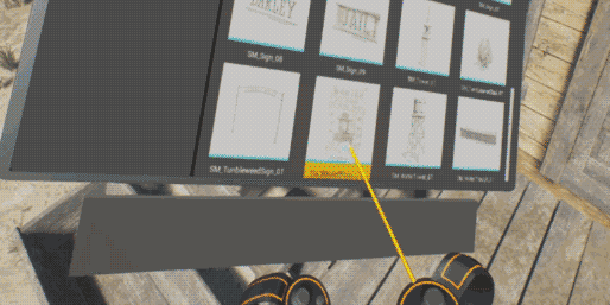Epic Games releases Unreal Engine 4.12

Epic Games has released Unreal Engine 4.12, the latest update to its game engine and development environment, formally rolling out its new Sequencer cinematic editor and VR Editor mode.
The update also introduces support for OSVR and Daydream, Google’s upcoming mobile VR platform; plus real-time planar reflections, and a lot of new graphics options for iOS and Android titles.
Sequencer: a complete nonlinear editing system
The headline features of Unreal Engine 4.12 aren’t strictly new, although they are both very cool.
First up is Sequencer, Unreal’s new nonlinear editing toolset, which was actually first released in Unreal 4.11, but which was disabled by default.
Designed for previz and episodic animation as well as cinematics, and “inspired by” traditional 3D packagees, the toolset supersedes Matinee, Unreal’s existing animation editor.
It comes with the option to record live gameplay as source material; plus a new Cinematic Camera Actor with properties designed to mimic real-world cameras, and other camera set-ups mimicking crane and rail rigs.
Work-in-progress new VR editing tools
The update also introduces the new VR Editor mode, previously available only in the source code.
It takes the unusual approach of enabling users to create VR content using VR controls, via an HTC Vive or Oculus Rift with Touch controller development hardware, as shown in the image at the top of the story.
The mode is togglable, although it’s still classified as an “early preview”, so it’s disabled by default.
In addition, Unreal Engine 4.12 adds support for two new VR platforms: Google’s upcoming Daydream mobile platform, first announced last month, and open-source platform OSVR.
New graphics options for mobile titles
If you’re developing for mobile, there are a number of new features, including an early preview of Epic’s work-in-progress renderer based on the new Vulkan mobile graphics API.
Mobile titles can also now use the filmic tonemapper, dynamic cascaded shadow maps for a single stationary light, and – on high-end devices – GPU particles with vector fields.
Unreal Engine’s Scalability system, designed to match a mobile game’s graphics quality to the hardware on which it is running, also gets new settings for foliage.

Real-time planar reflections, rigging updates and other new tools
Other features include real-time planar reflections, which are good-looking but incomplete: there’s no way to control which rendering features are enabled in the pass, and dynamic shadows and fog reflect incorrectly.
There are also changes designed to improve the way UE4 replicates car paint, including the option to use multiple normal maps with Clear Coat materials, and improvements to surface reflections.
Riggers get a new Twist Corrective node designed to correct artefacts that result from extreme poses, particularly of a character’s neck and shoulders, by applying morph targets based on relative bone angles.
There are also a number of other new features, including a neat Pixel Inspector tool that displays the material and rendering settings that contributed to the colour of any pixel on screen.
Pricing and availability
Unreal Engine 4.12 is available for 64-bit Windows 7+ and Mac OS X 10.9.2+. Use of the editor is free, but Epic takes 5% of gross revenues beyond the first $3,000 per quarter for any product you release commercially.
